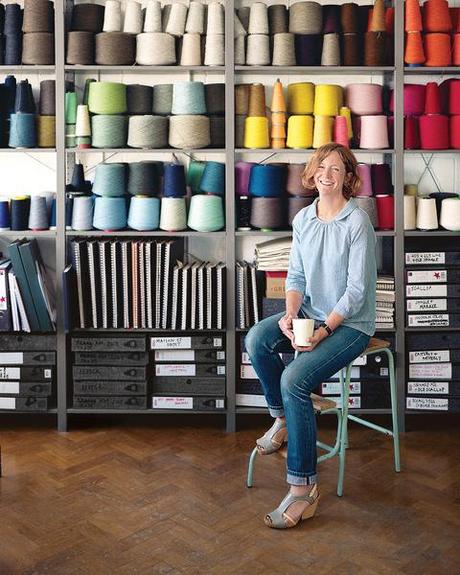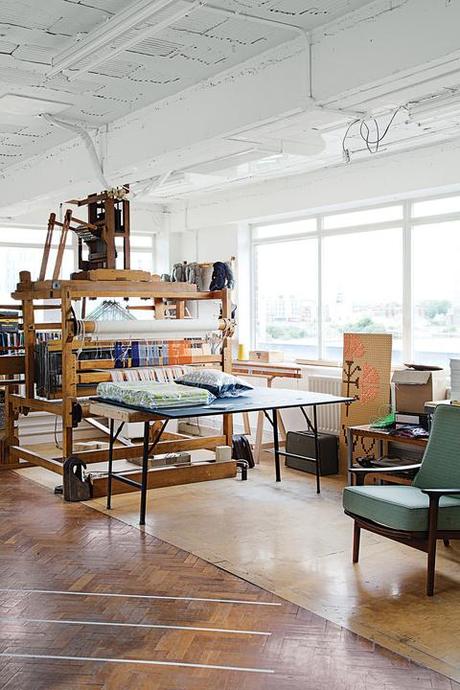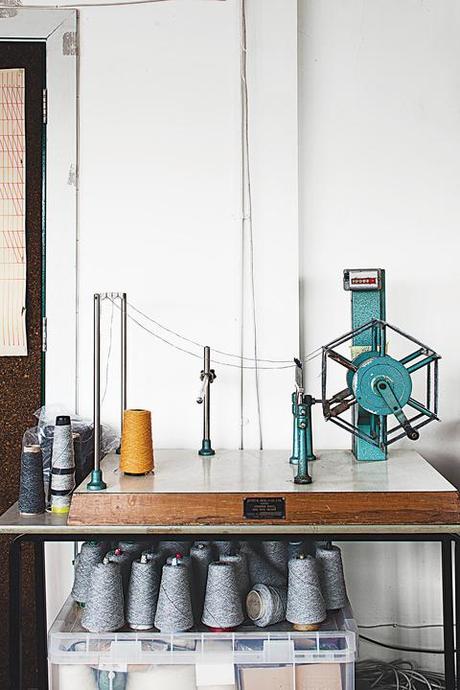
London-based designer Eleanor Pritchard sources Shetland lambswool from mills across the United Kingdom for her blankets, pillows, and upholstery. She designs the fabric patterns in her Deptford studio, near Greenwich, in a converted warehouse called Cockpit Studios.
Of all the mid-century modern variants, British is probably the least well known: Americans have rediscovered the Eameses; the Scandinavians know their Aaltos.
Slideshow
Pritchard uses her 30-year-old George Wood dobby loom to make in-house samples. The loom is of the “peg-and-lag” variety, in which a pattern is made by a machine that works from a binary code. “It’s an old workhorse,” says Pritchard, “and has done a lot of mileage over the years!”
Eleanor Pritchard, a contemporary English textile designer, knows her Enid Marx, who designed the seat fabrics for London’s public transportation lines, and Jack Pritchard (no relation), the Isokon director who produced the iconic Penguin Donkey bookcase. And all the other key figures of British modernism—whose greatest hour was the 1951 Festival of Britain, a national exhibition of the arts and sciences and of applied design—are familiar heroes. “It was incredibly optimistic,” she says of the era. “The idea that good design would make people’s lives better.”Pritchard is bringing that tradition of pride and craft, as well as a modern sensibility, to her own original textiles: wool blankets, cushions, scarves, and, most recently, upholstery fabrics, with simple, subtle geometrics and a sure sense of color.
Slideshow
In her studio, a hank winder spins bundles of wool yarn that are then used to stitch blanket edges.
Trained as a weaver at Chelsea College of Art and Design, Pritchard set up her studio with a single loom in 2003. Now, she’s ensconced, with two full-time employees, in a 700-square-foot workspace in southeast London, near Greenwich. Pritchard credits the growth of her line to increasing her export markets to over 24 countries.All the while, and true to British tradition, she has worked with regional mills—in Lancashire, Wales, and Scotland—to produce all the new upholstery fabric and her line of blankets.
“I’m interested in being hands-on with the manufacturing and not just designing and getting a royalty,” Pritchard explains. “Everyone says there’s no industry left in the country, but these small mills—in the farthest corners, that have been going on forever—were a world of excitement for me to discover. It’s not all gone.”
